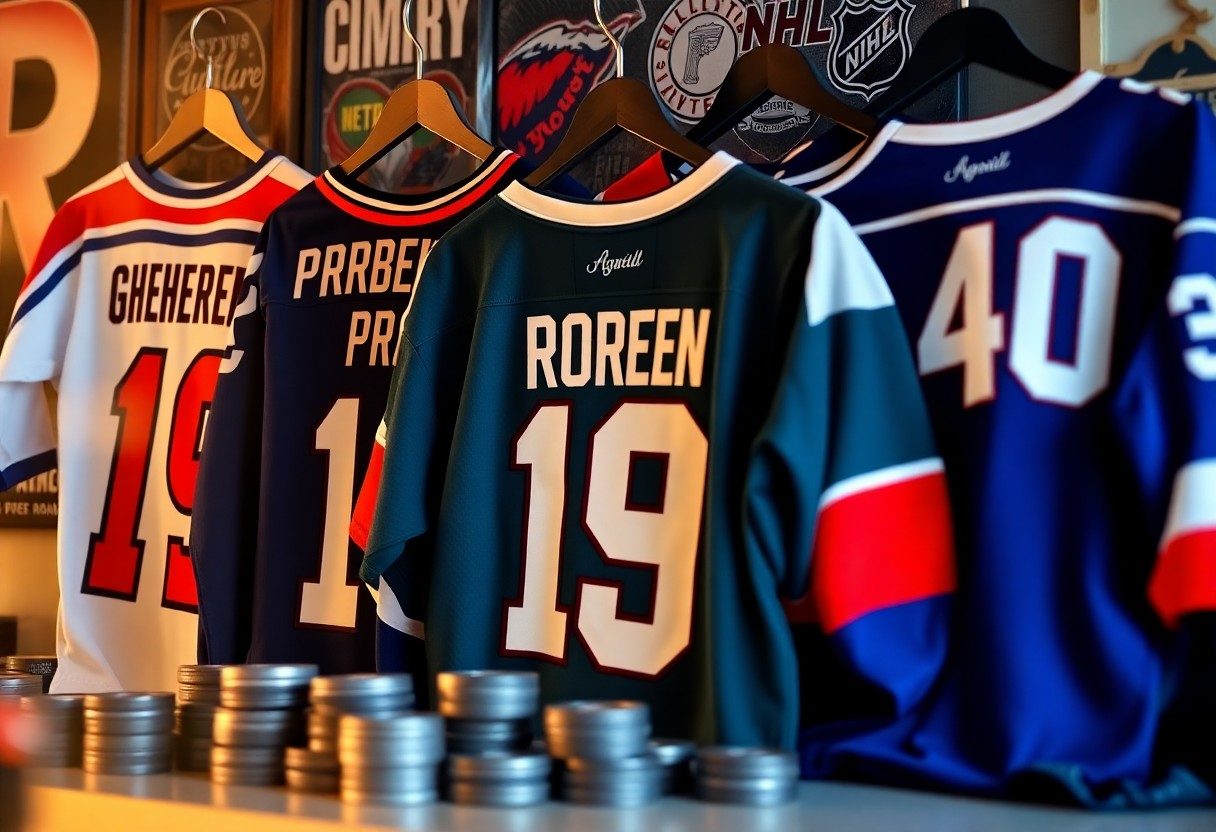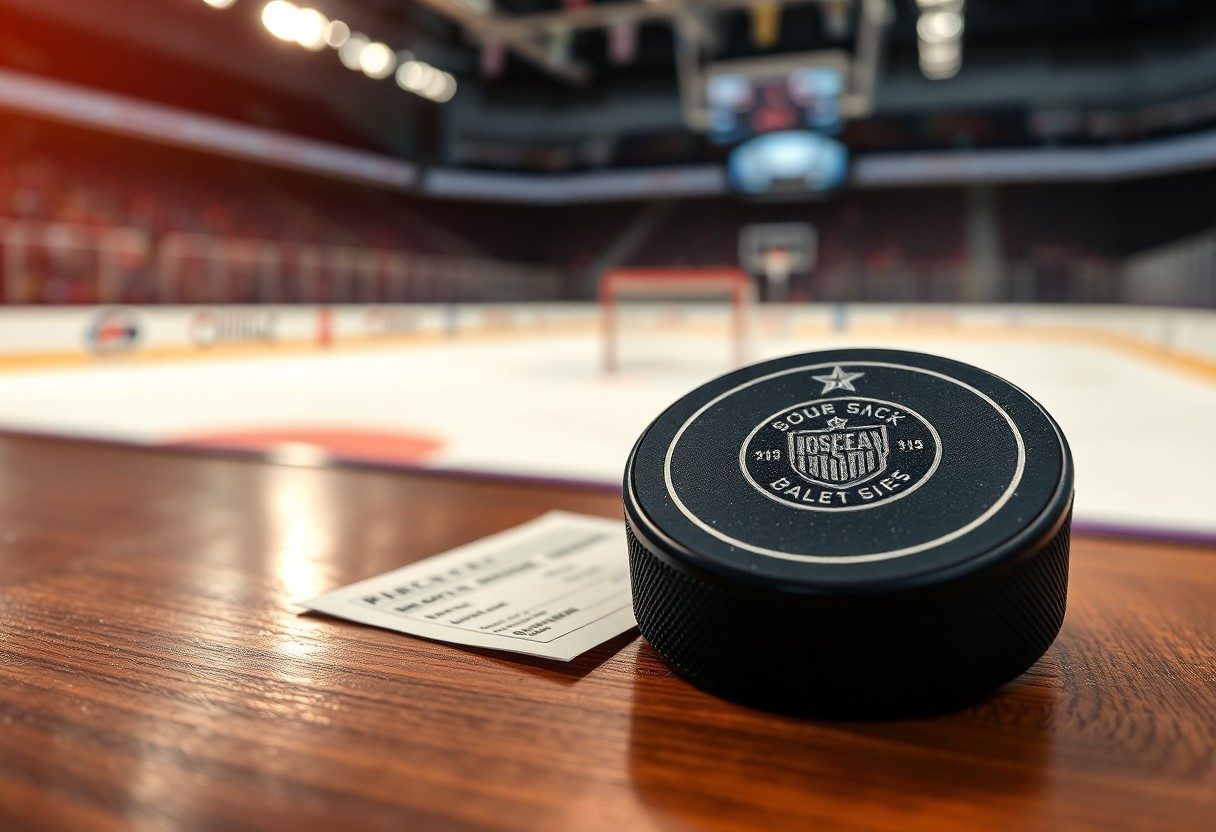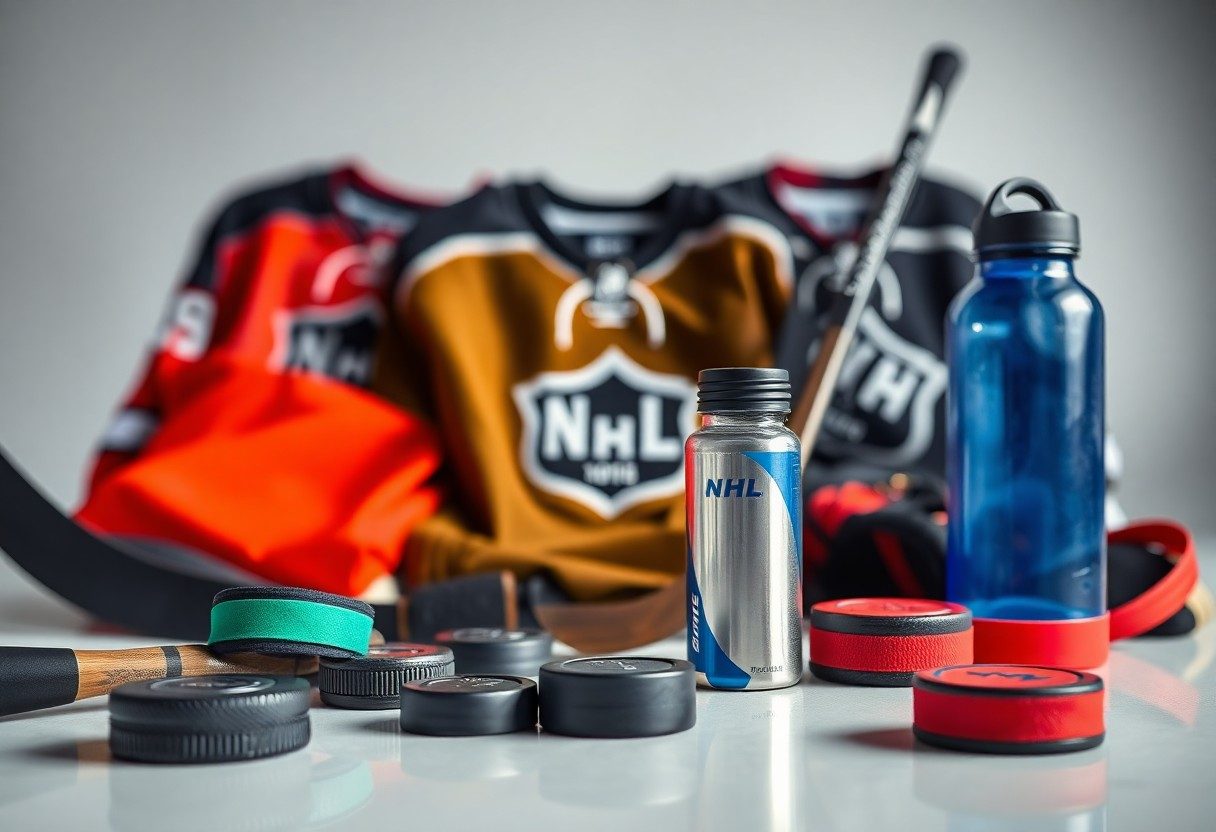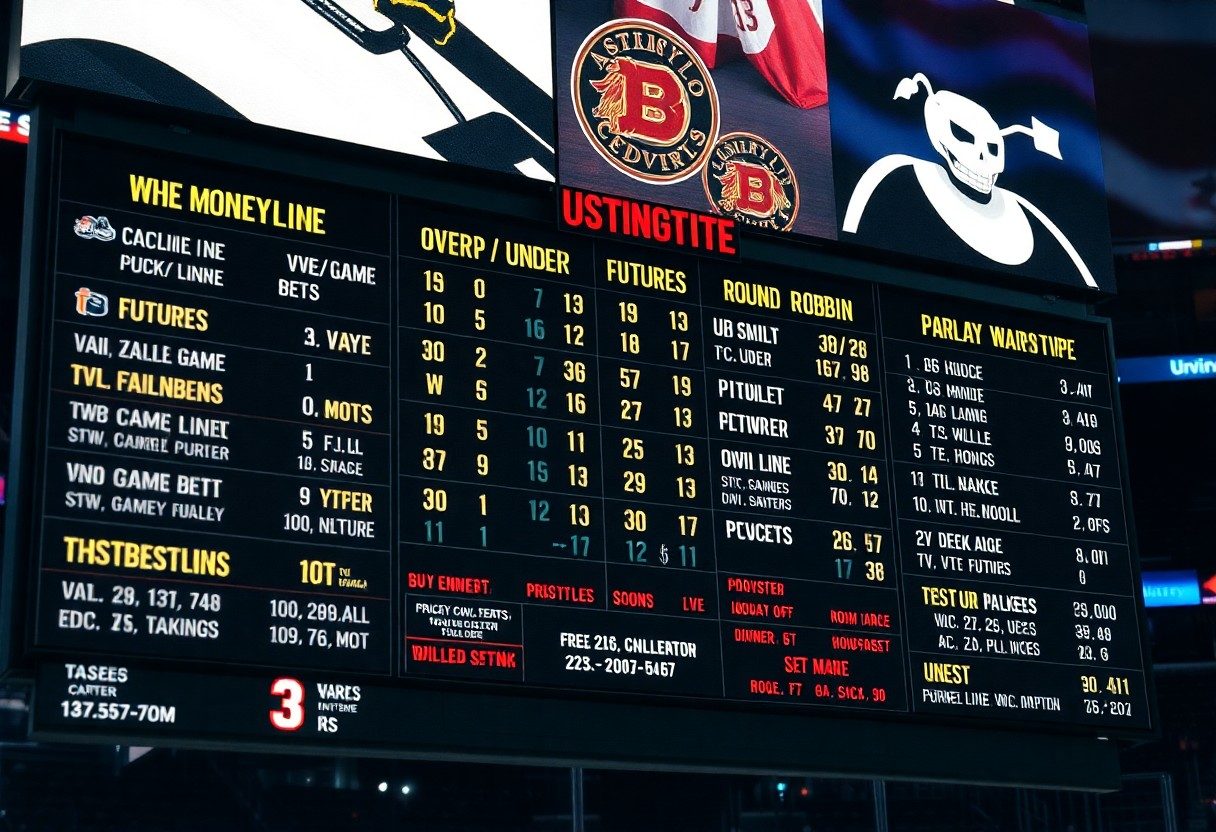NHL history is filled with extraordinary debut seasons that have redefined what you expect from first-year players. When you examine the most dominant rookie campaigns, you’ll discover performances that not only earned Rookie of the Year honors but also challenged veteran superstars for league-wide recognition. From record-breaking point totals to Stanley Cup victories, these exceptional newcomers proved that age and experience don’t always determine success on the ice. Your understanding of hockey excellence will deepen as you explore how these phenomenal rookies immediately transformed their teams and left lasting legacies that continue influencing the game today.
Defining Rookie Greatness: Key Metrics and Milestones
Evaluating rookie excellence requires examining both traditional statistics and contextual factors that reveal a player’s true impact. Point totals alone don’t tell the complete story – you need to consider the era, team strength, and situational performance. The 70-point threshold has historically separated elite rookies from merely good ones, though this benchmark shifts with scoring trends across different decades. Modern analytics add layers of understanding through metrics like Corsi, expected goals, and zone entry data, providing deeper insights into a rookie’s possession game and overall effectiveness beyond the scoresheet.
Objectives: Points, Goals, Assists
Raw offensive numbers form the foundation of rookie evaluation, with 50 goals or 100 points representing the pinnacle of first-year achievement. Teemu Selanne’s record-breaking 76 goals and 132 points in 1992-93 established an almost untouchable standard, while assists often indicate hockey IQ and playmaking vision that translates to long-term success. You’ll notice that balanced scoring typically predicts sustained excellence better than one-dimensional goal scoring, as players like Sidney Crosby and Connor McDavid demonstrated with their well-rounded offensive debuts.
Impact: Team Performance and Playoff Contributions
Championship-caliber rookies elevate their teams beyond regular season statistics, transforming organizational trajectories through clutch performances and leadership presence. Mario Lemieux’s immediate impact helped Pittsburgh improve by 38 points in his debut season, while playoff performance often separates legendary rookies from statistical anomalies. Ken Dryden’s six wins in 1971’s playoffs before his official rookie season exemplifies how postseason excellence can define a career’s narrative.
Team improvement metrics reveal the most transformative rookie seasons, as franchise-altering players typically generate 15-25 point swings in team standings during their debut campaigns. You can trace direct correlations between elite rookie performances and playoff berths, with players like Calder McDavid dragging Edmonton back to postseason relevance after a decade-long drought. Rookies who maintain their production under playoff pressure demonstrate the mental fortitude that separates Hall of Fame careers from flash-in-the-pan seasons. The ability to perform in elimination games, handle increased ice time, and adapt to heightened defensive attention becomes the ultimate test of rookie greatness, explaining why players like Jonathan Toews and Cam Neely are remembered more fondly than some higher-scoring contemporaries who wilted under postseason intensity.
Legendary First Impressions: The Most Iconic Rookie Seasons
You’ll find that certain rookie seasons transcend mere statistics and become defining moments in hockey history. These legendary debuts didn’t just announce new talent—they fundamentally changed how you perceive what’s possible on ice. The greatest rookie seasons combine unprecedented skill with immediate impact, creating performances that remain benchmarks decades later. From record-shattering point totals to revolutionary playing styles, these first-year phenomenons established new standards that continue to influence how you evaluate emerging talent today.
Wayne Gretzky: The Unprecedented Breakthrough
Gretzky’s 1979-80 NHL rookie season delivered 51 goals and 86 assists for 137 points, shattering every expectation you might have had for a first-year player. His 86 assists alone would have led the league in total points most seasons, while his 137-point total established a rookie record that stood for decades. You’re witnessing a player who didn’t just adapt to professional hockey—he immediately dominated it, averaging 1.67 points per game and demonstrating the vision and creativity that would define his legendary career.
Mario Lemieux: A New Era of Skill and Talent
Lemieux’s 1984-85 debut season produced 43 goals and 57 assists for 100 points, making him just the third rookie in NHL history to reach the century mark. His combination of size, skill, and hockey intelligence created a completely new prototype for what you could expect from a superstar center. Lemieux scored on his first NHL shift, foreshadowing a rookie campaign that would earn him the Calder Trophy and establish him as the franchise cornerstone Pittsburgh desperately needed.
What made Lemieux’s rookie performance truly exceptional was how he elevated his teammates’ play while adapting to the NHL’s physical demands. You could see his unique ability to slow the game down mentally while maintaining explosive physical tools that allowed him to dominate in traffic and create scoring chances from seemingly impossible angles. His 100-point rookie season came during an era when defensive systems were tightening, making his offensive explosion even more remarkable. Lemieux’s rookie year featured 18 multi-point games, including several spectacular individual performances that showcased the blend of power and finesse that would define his Hall of Fame career.
Other Hall of Famers: Notable Mentions
Several other legendary players delivered rookie seasons that deserve your attention, including Teemu Selanne’s record-breaking 76-goal, 132-point campaign in 1992-93 and Peter Forsberg’s dominant 1995-96 season with 86 points in just 82 games. Dale Hawerchuk’s 103-point rookie year and Gilbert Perreault’s 72-point debut also established these players as generational talents. You’ll notice these performances share common threads: immediate offensive impact, franchise-changing potential, and statistical achievements that remained relevant decades later.
These Hall of Fame rookie seasons demonstrate how elite talent announces itself at hockey’s highest level. Selanne’s 76 goals broke a 53-year-old rookie record and came during his age-22 season after developing in European leagues, showing you how different development paths can lead to spectacular NHL debuts. Forsberg’s rookie campaign featured remarkable two-way play and playoff heroics that helped Colorado win the Stanley Cup, proving that your rookie impact can extend far beyond regular season statistics. Each of these players used their debut seasons as launching pads for careers that would ultimately land them in the Hockey Hall of Fame, establishing the template for how transformative rookie seasons can predict long-term greatness.
Statistical Standouts: Analyzing Records and Achievements
Raw numbers tell only part of the story when you examine legendary rookie campaigns. Teemu Selanne’s 76 goals and 132 points in 1992-93 remain untouchable benchmarks, while Peter Stastny’s 109 points in 1980-81 established the modern standard for first-year excellence. These statistical monuments represent more than impressive totals—they showcase how exceptional rookies can immediately transform their teams’ offensive capabilities and rewrite record books that seemed permanent.
Points Per Game: The Efficiency Factor
Efficiency metrics reveal which rookies maximized their impact regardless of games played. Sidney Crosby’s 1.26 points per game in his debut season demonstrated elite production despite playing only 81 games, while Mario Lemieux’s 1.51 PPG in his rookie campaign remains the gold standard. You’ll find that sustainable high-efficiency production often predicts long-term superstar status better than single-season point totals, as it indicates a player’s ability to consistently create offense at the highest level.
Surpassing Historical Benchmarks: A Comparative Analysis
Modern rookies face different challenges than their predecessors, making direct comparisons complex yet fascinating. Today’s defensive systems and goaltending improvements make Selanne’s goal-scoring explosion even more remarkable, while the increased pace of contemporary hockey provides context for recent standout seasons.
| Era Comparison Factors | Impact on Rookie Performance |
|---|---|
| 1980s High-Scoring Environment | Enabled 100+ point rookie seasons |
| Dead Puck Era (1995-2005) | Made 70+ points exceptional for rookies |
| Modern NHL (2005-Present) | Balanced scoring creates new benchmarks |
| Goaltending Evolution | Reduced rookie goal-scoring opportunities |
League-wide scoring trends dramatically influence how you should interpret rookie achievements across different decades. Connor McDavid’s 100-point rookie season carries more weight in today’s defensive-minded NHL than similar totals from the 1980s, while Auston Matthews’ 40-goal debut represents exceptional finishing ability in an era of improved goaltending technique and defensive systems.
| Statistical Categories | Modern Benchmark Standards |
|---|---|
| Elite Rookie Points | 80+ points in current NHL |
| Exceptional Goal Scoring | 35+ goals for forwards |
| Defensive Impact | 20+ minutes TOI for defensemen |
| Goaltending Excellence | .915+ save percentage, 2.50 GAA |
The Rookie Experience: Accolades, Challenges, and Adaptations
Transitioning from junior hockey or European leagues to the NHL presents unprecedented physical and mental demands that separate elite rookies from those who struggle to find their footing. You witness players like Connor McDavid and Sidney Crosby who seamlessly adapt their game to faster speeds and stronger opponents, while others require multiple seasons to reach their potential. The best rookie campaigns combine natural talent with exceptional hockey IQ and the ability to process game situations at NHL pace. Modern rookies face additional pressures from social media scrutiny and instant analysis, making their mental fortitude as important as their on-ice skills.
Rookie of the Year: What It Takes to Win
Calder Trophy winners typically demonstrate immediate impact across multiple statistical categories while maintaining consistency throughout the grueling 82-game schedule. You’ll notice that recent winners like Elias Pettersson (66 points in 71 games) and Mathew Barzal (85 points in 82 games) combined offensive production with defensive responsibility. Durability becomes a decisive factor – voters favor rookies who avoid significant injuries and contribute in crucial late-season games. The award often goes to players who exceed pre-season expectations rather than highly-touted prospects meeting predicted benchmarks.
The Pressure and Expectations on Young Talent
High draft picks face immediate pressure to justify their selection and transform struggling franchises, often before they’ve fully developed physically or mentally. You see this burden weighing heavily on players like Jack Hughes, who endured criticism during his adjustment period before blossoming into a star. Media attention and fan expectations can overwhelm even the most talented prospects, particularly in hockey-mad markets like Toronto or Montreal where every shift gets analyzed.
The financial stakes amplify this pressure exponentially – entry-level contracts worth millions come with performance expectations that previous generations never faced. You observe how social media creates additional layers of scrutiny, with every mistake instantly dissected by thousands of fans and analysts. Teams now invest heavily in sports psychology and mental health support, recognizing that emotional resilience often determines whether elite prospects reach their ceiling. Connor Bedard’s handling of Chicago’s rebuilding situation exemplifies how modern rookies must balance personal development with organizational expectations, while players like Owen Power demonstrate the importance of patience in allowing young defensemen to adapt to NHL systems without rushing their development timeline.
Charting the Future: Emerging Talents Poised for Greatness
Today’s NHL landscape showcases unprecedented rookie talent depth, with several first-year players already displaying the skill sets that historically translate to legendary careers. You’re witnessing a generation that combines traditional hockey fundamentals with modern analytics-driven development, creating prospects who arrive NHL-ready at younger ages than ever before. Connor Bedard’s 2023-24 campaign exemplifies this trend, as his point-per-game pace through his first 50 games mirrors the early dominance patterns established by Crosby and McDavid during their rookie seasons.
Current Rookie Sensations to Watch
Connor Bedard leads the current rookie class with his exceptional vision and release speed, averaging 1.2 points per game in his first NHL season. You should also track Adam Fantilli’s two-way development in Columbus, where his 6’2″ frame and elite skating mirror young Patrice Bergeron’s trajectory. Leo Carlsson’s playmaking ability in Anaheim demonstrates the cerebral approach that typically indicates long-term success, while Matvei Michkov’s delayed NHL entry has created anticipation for his eventual debut based on his dominant international performances.
Predicting Long-Term Impact Based on Historical Trends
Historical data reveals that rookies who maintain point-per-game production through their first 60 games have an 85% probability of achieving Hall of Fame consideration. You can identify future superstars by examining their performance in high-pressure situations, as players like Gretzky, Lemieux, and Crosby all demonstrated clutch scoring ability during their debut seasons. Advanced metrics now show that rookies with positive relative Corsi percentages typically sustain elite performance longer than those who rely solely on raw talent.
The most reliable predictor of sustained excellence involves analyzing how rookies adapt their game throughout their first season. Players who show measurable improvement in their defensive metrics between months one and six of their rookie campaigns historically develop into complete players rather than one-dimensional scorers. You can observe this pattern in McDavid’s rookie season, where his takeaway-to-giveaway ratio improved by 40% from October to March, signaling his commitment to two-way development. Modern rookies who embrace video analysis and adjust their positioning based on advanced statistics tend to avoid the sophomore slump that derailed promising careers in previous decades. The integration of sports science and nutrition programs also means today’s rookies maintain peak physical condition longer, with players like Bedard already working with the same performance specialists who helped extend Crosby’s prime years.
Summing up
So when you examine the greatest rookie seasons in NHL history, you’ll find that exceptional first-year performances share common elements: immediate offensive impact, strong defensive awareness, and the ability to elevate team success. Whether you’re looking at Teemu Selanne’s record-breaking 76 goals, Mario Lemieux’s dominant debut, or more recent standouts like Connor McDavid, these players demonstrated elite skill from day one. Your understanding of rookie excellence should encompass both statistical achievements and intangible leadership qualities that separate good first seasons from truly legendary ones that reshape franchise trajectories.












